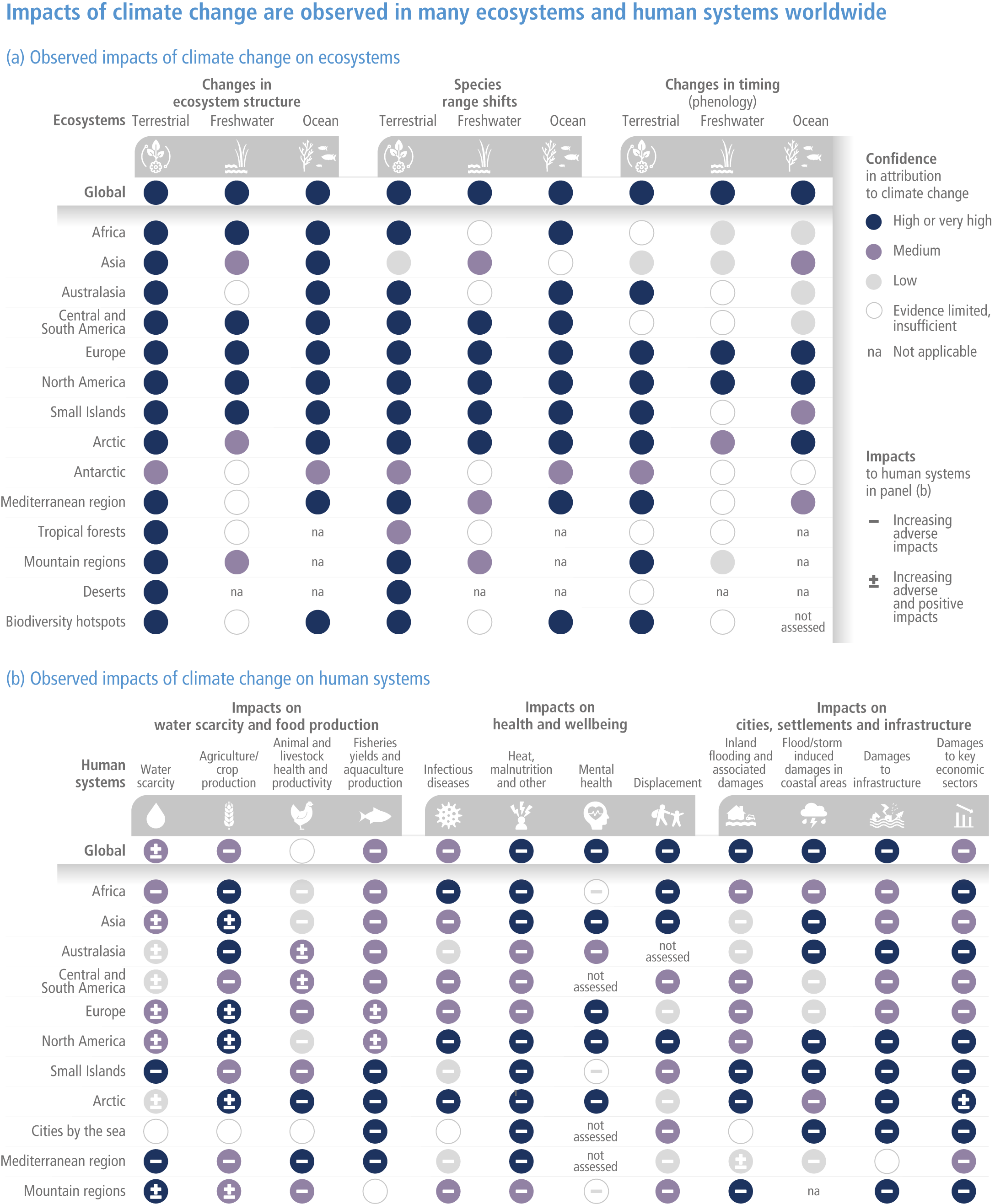Figure TS.3
Figure caption
Figure TS.3 | Observed global and regional impacts on ecosystems and human systems attributed to climate change. Confidence levels reflect uncertainty in attribution of the observed impact to climate change. Global assessments focus on large studies, multi-species, meta-analyses and large reviews. For that reason they can be assessed with higher confidence than regional studies, which may often rely on smaller studies that have more limited data. Regional assessments consider evidence on impacts across an entire region and do not focus on any country in particular.
(a) Climate change has already altered terrestrial, freshwater and ocean ecosystems at global scale, with multiple impacts evident at regional and local scales where there is sufficient literature to make an assessment. Impacts are evident on ecosystem structure, species geographic ranges and timing of seasonal life cycles (phenology) (for methodology and detailed references to chapters and cross-chapter papers see SMTS.1 and SMTS.1.1).
(b) Climate change has already had diverse adverse impacts on human systems, including on water security and food production, health and well-being, and cities, settlements and infrastructure. The + and – symbols indicate the direction of observed impacts, with a – denoting an increasing adverse impact and a ± denoting that, within a region or globally, both adverse and positive impacts have been observed (e.g., adverse impacts in one area or food item may occur with positive impacts in another area or food item). Globally, ‘–’ denotes an overall adverse impact; ‘Water scarcity’ considers, e.g., water availability in general, groundwater, water quality, demand for water, drought in cities. Impacts on food production were assessed by excluding non-climatic drivers of production increases; Global assessment for agricultural production is based on the impacts on global aggregated production; ‘Reduced animal and livestock health and productivity’ considers, e.g., heat stress, diseases, productivity, mortality; ‘Reduced fisheries yields and aquaculture production’ includes marine and freshwater fisheries/production; ‘Infectious diseases’ include, e.g., water-borne and vector-borne diseases; ‘Heat, malnutrition and other’ considers, e.g., human heat-related morbidity and mortality, labour productivity, harm from wildfire, nutritional deficiencies; ‘Mental health’ includes impacts from extreme weather events, cumulative events, and vicarious or anticipatory events; ‘Displacement’ assessments refer to evidence of displacement attributable to climate and weather extremes; ‘Inland flooding and associated damages’ considers, e.g., river overflows, heavy rain, glacier outbursts, urban flooding; ‘Flood/storm induced damages in coastal areas’ include damages due to, e.g., cyclones, sea level rise, storm surges. Damages by key economic sectors are observed impacts related to an attributable mean or extreme climate hazard or directly attributed. Key economic sectors include standard classifications and sectors of importance to regions (for methodology and detailed references to chapters and cross-chapter papers see SMTS.1 and SMTS.1.2).
